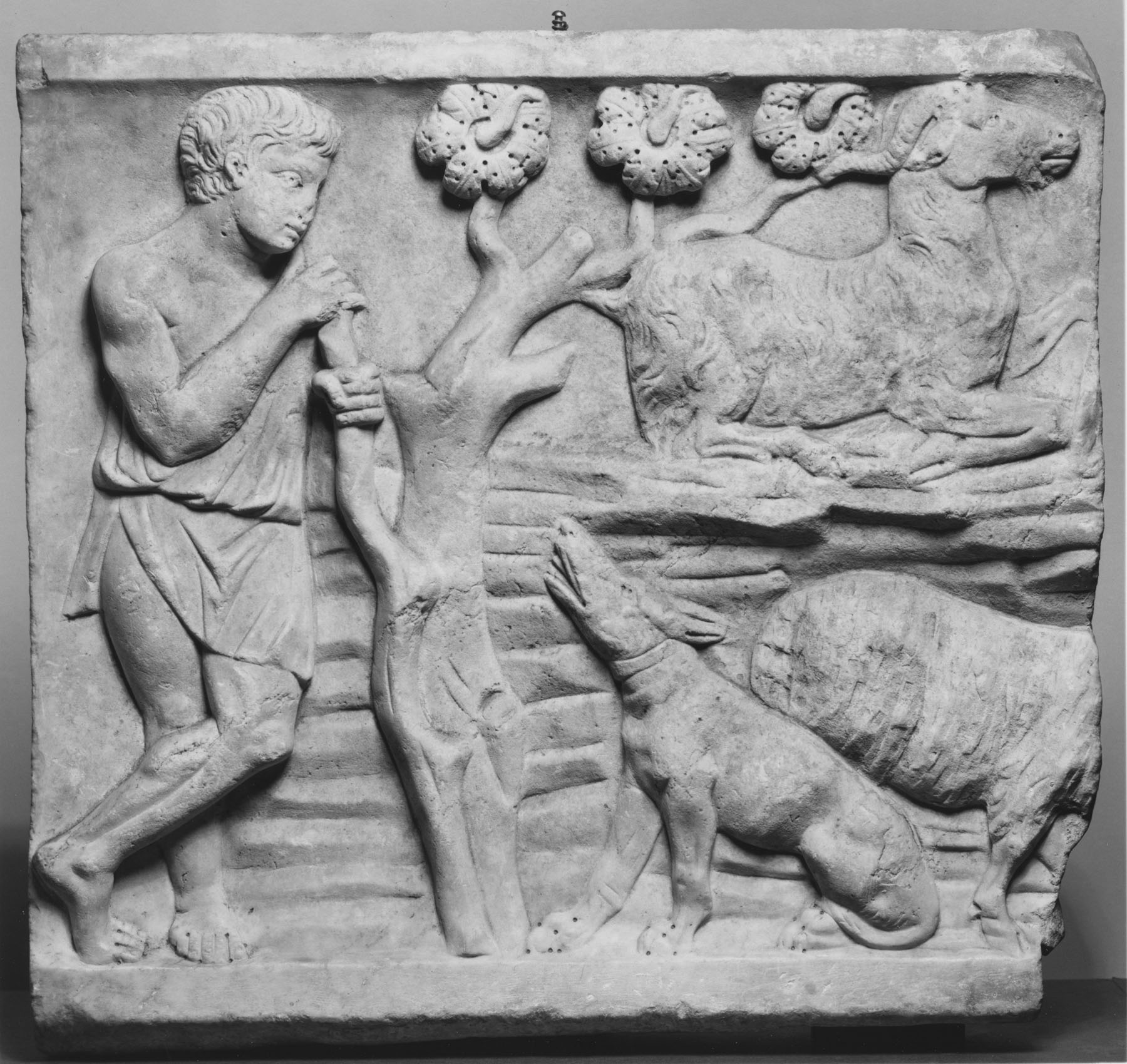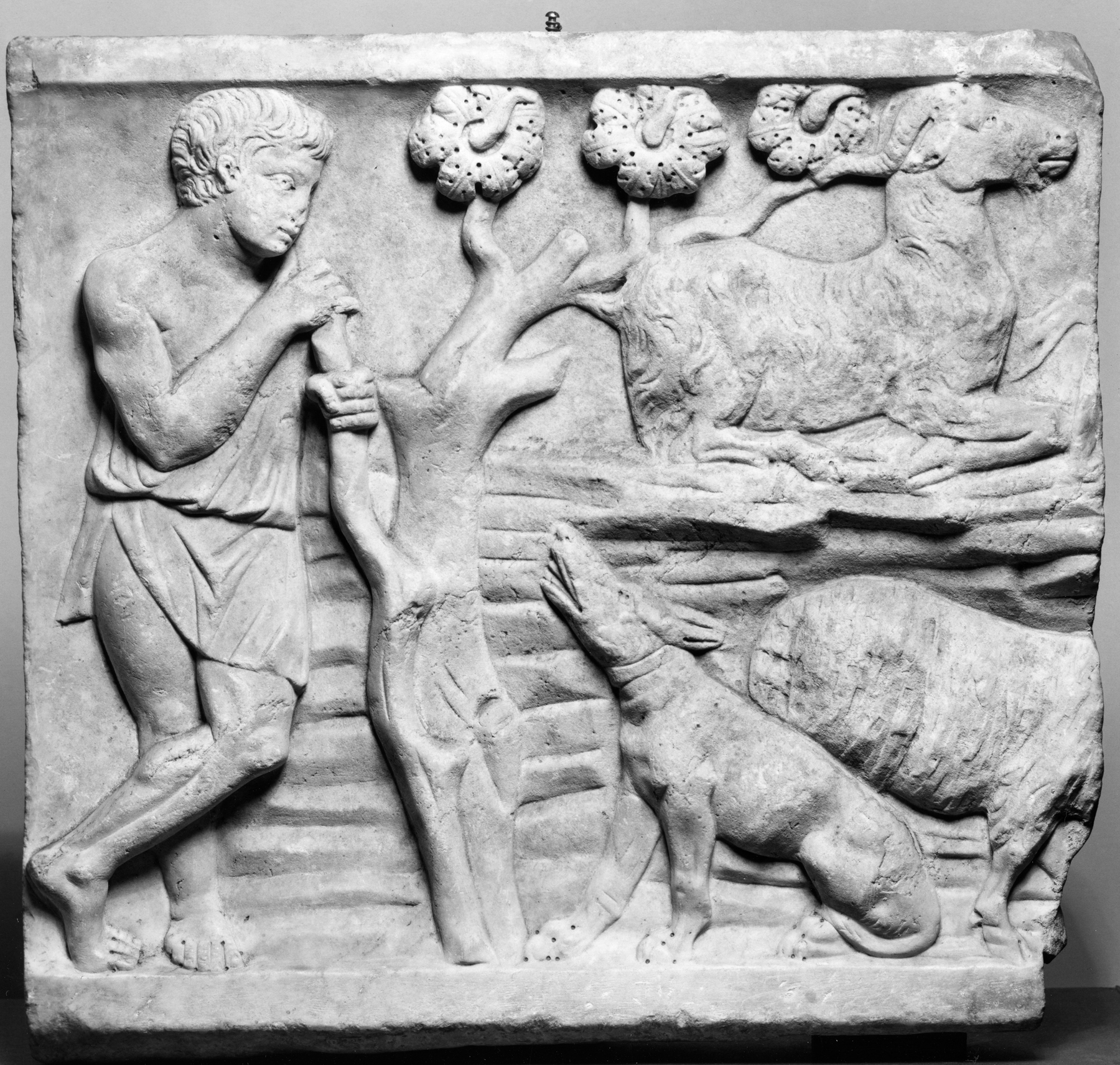Relief of a Herdsman
(Roman Empire )
This relief decorated the short end of a sarcophagus (stone coffin). It shows a herdsman accompanied by his dog, a sheep, and a goat. The long side of the sarcophagus, now lost, would have depicted the Greek myth of Endymion, a handsome shepherd with whom the moon-goddess Selene fell in love. She granted him eternal sleep and youth and visited him at night. The herdsman depicted here mourns his friend's seeming death.
Provenance
Provenance (from the French provenir, 'to come from/forth') is the chronology of the ownership, custody, or location of a historical object. Learn more about provenance at the Walters.
Don Marcello Massarenti Collection, Rome [marble no. 63], by 1894, [mode of acquisition unknown]; Henry Walters, Baltimore, 1902, by purchase; Walters Art Museum, 1931, by bequest.
Conservation
| Date | Description | Narrative |
|---|---|---|
| 1/1/1959 | Treatment | cleaned |
| 7/20/1970 | Treatment | cleaned |
| 1/12/1978 | Treatment | cleaned |
| 1/1/1992 | Technical Report | x-ray diffraction; other |
| 6/26/2001 | Treatment | cleaned; other |
Geographies
Roman Empire (Place of Origin)
Measurements
20 1/2 x 21 7/8 x 3 9/16 in. (52.1 x 55.6 x 9.1 cm)
Credit Line
Acquired by Henry Walters with the Massarenti Collection, 1902
Location in Museum
Accession Number
In libraries, galleries, museums, and archives, an accession number is a unique identifier assigned to each object in the collection.
In libraries, galleries, museums, and archives, an accession number is a unique identifier assigned to each object in the collection.
23.19




